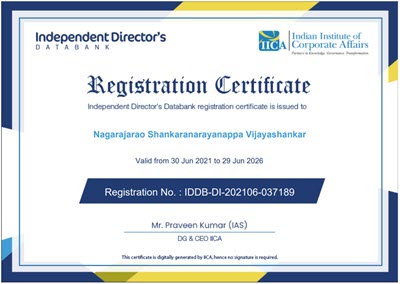Recently Union Minister of Minister of Law has been raising questions on the relationship of the Executive and the Judiciary in respect of appointment of Judges. (Refer here).
Another question which has been bugging me always is the Supreme Court’s tendency to jump into every executive decision and scrutinizing it from the Constitutional view point ignoring the need to keep limits between the Executive and Judicial functions.
In this respect what is intriguing is that our Constitution has been amended so many times including the Preamble itself but we still discuss that the “Basic Structure” cannot be altered. There appears to be inconsistency in the approach of the Supreme Court in such matters. I am also reminded of the Justice Chelmeshwar’s statement in the Puttaswamy case
” To sanctify an argument that whatever is not found in the text of the Constituion cannot become a part of the Constitution would be too primitive an understanding of the Constituion and contrary to settled cannons of constitutional Interpretation”
(Please see more at “Does Written Text of the Constitution not have any sanctity?)
The above comment of Justice Chelmeshwar underscored the arrogance of the Supreme Court that they can not only interpret and read down the constitution but also go beyond the written constitution and lay down principles not mentioned in the Constitution at all.
As a common citizen I cannot understand how Supreme Court can usurp such powers and re-define Constitution according to their whims and fancies. In such situations the debate always veers around to the powers of the Supreme Court and the Executive as regards the Constitution where the Keshavananda Bharati judgement is often cited.
In the light of the above, it was interesting to observe a post from Advocate Mathew J Nedumpara, a veteran advocate who calls a Spade a Spade which has been reproduced here with his permission.
Mr Nedumpara clearly lays down certain principles which expose the fallacy in the approach adopted by the Supreme Court in the NJAC case. It warrants some introspection by the Supreme Court.
Otherwise the effect of Keshavananda Bharati judgement is to freeze the Constitution along with all the basic structure amendments made upto a particular date and there after not allow any amendments that become necessary with the passage of time.
This also means that India is not a Parliamentary democracy but a Court administered Country in which Parliament is subordinated to the NJAC controlled Judiciary.
Wonder if there are any similarities of this structure to what we find today in Afghanistan where a self appointed “Council” lays down the laws of the nation for the executive to follow.
Naavi
A Guest Post from : Advocate Mathews J Nedumpara
Kesavananda Bharati’s case is hailed to be the most important judgment ever rendered by the Supreme Court of India. The case was heard by the full court consisting of 13 judges. The case was argued for 6 months and the judgment consists of half a million words. Even the common people have heard of the judgment.
In the said case, the Supreme Court laid down a doctrine called ‘basic structure’ and said that while the Parliament could amend every article of the constitution including those concerning the fundamental rights, but not the ‘basic structure’.
The judges would not have, even in their wildest of dreams, ever contemplated the extent to which the said doctrine would affect the constitutional law of this country. We have a written constitution. Many modern democracies, including the United States, Canada, Australia have written constitutions like we have. Wherever there is a written Constitution, it provides for a mechanism for amendment. Article 368 of our constitution empowers the Parliament to amend the Constitution, except for certain matters, by a Bill which has been passed by each House by a majority of the total membership of that House and by a majority of not less than two-thirds of the members of that House present and voting and which has been ratified by not less than one-half of the states.
By the Constitution (24th Amendment) Act of 1971, the Parliament expressly made it clear that the constitutionality of a Constitution Amendment Act is not justiciable.
It was in the backdrop of the said amendment that the Kesavananda Bharati case came to be instituted and a split judgment in the ratio of 7:6, popularly known as the ‘fundamental rights case’, came to be delivered. The basic structure doctrine meant not mere re-writing of the constitution, but destroying one of the core features of the constitution, namely, balance of powers or separation of legislative and judicial functions.
Prior to Kesavananda Bharati, one could invoke the jurisdiction of the Supreme Court under Article 32 if his fundamental rights are violated for remedies in nature of various writs. After Kesavananda Bharti, petitions are filed in the SC pleading violation of no fundamental rights, but on the premise that the basic structure of the constitution is infringed. In Minerva Mills, on that premise, Constitution (42nd Amendment) Act was struck down. In 2014, the National Tax Tribunal was struck down on the premise that it is violative of the basic structure of the constitution!
As a law student, almost 40 years ago, I was told that any “person aggrieved”, meaning any person who has suffered a legal injury at the hands of another which will entail him remedies in law can approach a court, and that access to justice is the birth right of every citizen. ‘Right, remedy, forum’, nay, in other words, without a right being infringed, there is no room for the law entailing you any remedy. And without right and remedies, there is no question of any court to enforce it.
But Kesavananda Bharati, meant that one can approach the highest court of the country without recourse to any other court when he has admittedly not suffered any legal injury, simply because he feels the basic structure of the constitution has been infringed. I am not being sarcastic. I am dealing with the reality.
The SCOARA, the premier lawyers body of the Supreme court, challenged the Constitution (99th Amendment) Act, which provides for NJAC, a body consisting of the Chief Justice of India and the two senior most judges, 2 eminent persons representing the civil society to be selected by a committee consisting of the PM, the CJI and the Leader of the Opposition and the Law Minister as the 6th member representing the executive, on the premise that it is violative of the “basic structure”.
Shockingly, the said plea was accepted, the entire Constitution Amendment Act which had received the unanimous approval of both Houses of the Parliament and 21 State Assemblies, was struck down.
Since the judgment ran into 1034 pages, few would have read and even those who have read it probably may not have understood the “principle/reason” for which it was struck down.
It would shock you that the reasons are that:
(a) the independence of the judiciary is one of the basic structure of the constitution which the Parliament has no power to abrogate,
(b) the core of that independence of judiciary is not in the discharge of its judicial function independently and impartially post appointment,
(c) the core of the independence is in appointments,
(d) that this core is secured when the Chief Justice of India has “primacy” and therefore the word ‘consultation’ used in Articles 124 and 217 does not mean consultation, it does not even mean concurrence, but “primacy”,
(e) the “primacy” does not mean the primacy of the individual opinion of the CJI, but the opinion of the collegium of judges,
(f) that the “primacy” of the collegium in the matter of appointment and transfer of judges is an integral component of the “basic structure” of the constitution by virtue of the judgement in the Judges-2 case,
(g) that the validity of the 99th Constitutional Amendment ought to be tested on the touchstone of the judgement in the Judges-2 case and
(h) that the constitutional amendment is in violation of the Judges-2 case; it is unconstitutional.
As a student of law, I cannot imagine of a concept which is so destructive of the first principles of jurisprudence than the basic structure doctrine, which is hailed as the greatest contribution of the Supreme Court to our constitutional law.
Hundreds of judgments are rendered, even by constitutional benches, on wide ranging issues, relying on the basic structure theory, which in all humility, I hold to be against the first principles of jurisprudence.
Law is a very simple subject. It is nothing but reason; common sense. Kesavananda Bharati, so too the hundreds of judgments which pronounce that the judgements of the Supreme Court are the law of the land by virtue of Article 141, and now by virtue of Article 142 as well, are, in all humility, are rendered against the first principles. The subtle but real distinction between the concept of res judicata, res inter alios acta, stare decisis, judgment in rem and judgment in personam are failed to be noticed.
The concept of Rule of Law is built on the doctrine of estoppel res judicata. Stated in simple words, it means that, a judgement in a case between A and B will bind them, no matter how erroneous the judgement could be. The doctrine of res inter alios means that a judgement in which one was not a party will not bind one. In other words, C, D and others are not bound by a judgment in a case between A and B. However, there is an exception, namely, judgements in rem, namely, judgments as agaisnt the whole world. All judgements except those concerning status are judgments in personam. It will not bind any except those who were party to the proceedings. As aforesaid, most judgements are in the realm of judgments in personam, except judgments in criminal cases or those concerning status. For instance, a judgment in a suit for divorce where divorce is granted, the judgment is one rendered in rem, as against the whole world. Where divorce is rejected, the judgment is one in personam, because there is no change of status.
The doctrine of res judicata estoppel is co-related to the concept of ’cause of action’. Unless the cause of action and the parties are the same, there is no res judicata. There is no Estoppel against law.
No judgment of the Supreme court, even of the full court of the SC, even Kesavananda Bharati, constitutes to be estoppel res judicata except to those who are parties to it. The judgment in Kesavananda Bharati will not bind me or you. It will only bind the parties to that case and is res judicata in so far as the cause of action which came to be decided is concerned.
Article 141, understood in its correct perspective, will not make that judgment binding on me or you. However, in this country and nowhere else, may be because Article 141 is so misunderstood, judgments of the SC are treated as legislation, and even beyond. In the NJAC case, the judgment of the SC in the Judges-2 case was given a status even higher than that of Article 368 of the Constitution. To repeat, the 99th Constitution Amendment Act was struck down because it is in breach of the Judges-2 case and the basic structure theory propounded therein.
In the name of the basic structure doctrine, the will of the people as reflected in the 99th Constitution Amendment Act, to dismantle the collegium system where judges appoint themselves, which has proven to be nothing but a synonym for nepotism, a creation of the Judges-2 case, was struck down and the collegium was restored. In other words, the mechanism of judicial review, a sacrosanct concept recognized in all modern legal systems as a tool for the enforcement of basic rights, is being used in India to subvert the will of the people- the supreme legislature.
My thoughts delve into these issues because I believe in democracy and am concerned about its future, in particular the future of the Supreme Court. The Supreme court is hailed to be the most powerful court on the planet. People file thousands of PILs, calling upon the court to resolve all problems of mal-administration which the country faces today, which the court will certainly not be in a position to handle. The criticism the court will invite where it fails to deliver as an executive in substitution will lead to large scale public resent and criticism. The power of contempt which was used during the days of inquisition and the Dark Ages will not be able to save the court. Allowing the executive to be demonized using PIL as a tool also does not augur well for democracy.
Mathews J Nedumpara
P.S: The most interesting part of the Keshavananda Bharati judgment is the statement
“the core of that independence of judiciary is not in the discharge of its judicial function independently and impartially post appointment“
Naavi









